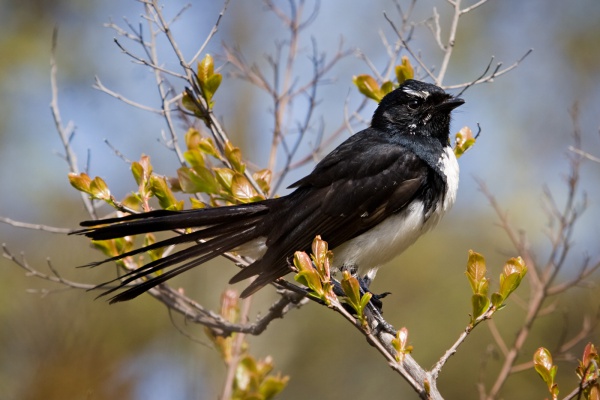Facts About Willie wagtail
The Willie Wagtail, scientifically known as *Rhipidura leucophrys*, is a captivating bird native to Australia, New Guinea, the Solomon Islands, the Bismarck Archipelago, and Eastern Indonesia. With its striking black and white plumage, this small bird measures about 19–21.5 cm in length. Renowned for its lively demeanor, the Willie Wagtail loves foraging on the ground, darting after insects in open spaces. It's quite a feisty character, often seen chasing off larger birds and thriving even in human-altered landscapes, making it a familiar sight in urban areas.
Belonging to the fantail genus *Rhipidura*, the Willie Wagtail shares its family tree with true crows, ravens, drongos, and birds-of-paradise. Its common name is derived from its distinctive habit of wagging its tail side-to-side while hunting for food. This bird holds a special place in various cultures, often appearing in Aboriginal folklore across Australia and New Guinea, with each region attributing different names and stories to it.
One of the most fascinating aspects of the Willie Wagtail is its vocal and territorial nature. These birds are known to fiercely defend their territory, even against much larger species, and they typically form lifelong pairs. Their nests, woven from grass, bark, and spider web, are usually built in open areas, away from thick foliage. The breeding season runs from July to December, during which they can raise up to four broods.
Regarding their diet, Willie Wagtails primarily consume insects and small invertebrates. They are opportunistic hunters, catching flying insects mid-air or picking them off the ground. Their adaptability allows them to thrive in diverse environments.
Culturally, the Willie Wagtail holds significant meaning. Different Aboriginal tribes attribute various roles and meanings to this bird in their traditions, highlighting its importance beyond just its ecological role.
